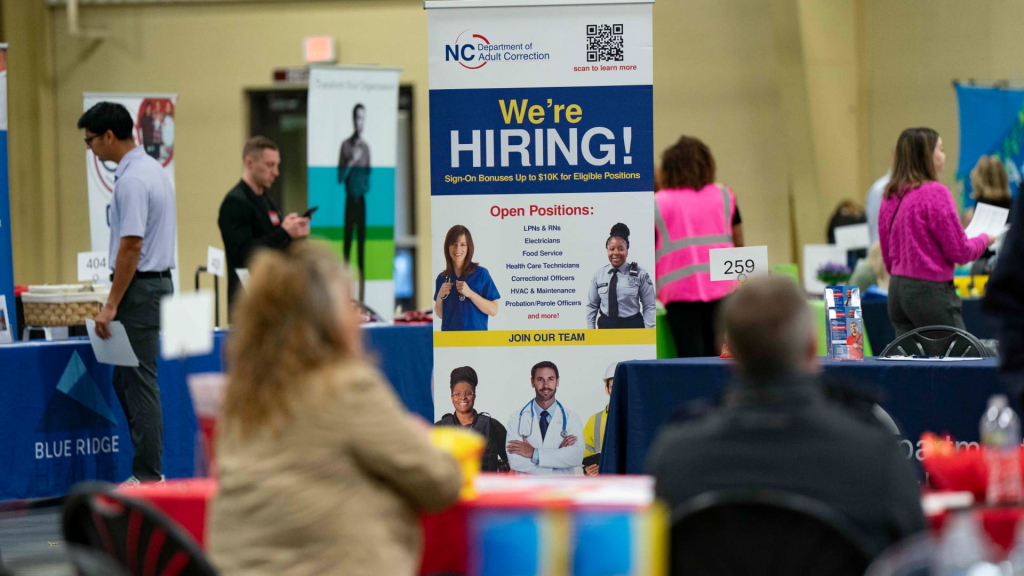The pace of hiring appears to have significantly slowed in May, as both businesses and consumers prepared for increasing tariffs and persistent economic uncertainties. The pressing issue now is the extent of this slowdown.
While a slight decrease from recent numbers might not raise alarms, a more substantial drop could trigger renewed concerns about the labor market and the overall economy, potentially prompting the Federal Reserve to act sooner than anticipated on interest rates.
Economists are forecasting that the upcoming report from the Bureau of Labor Statistics, slated for release Friday at 8:30 a.m. ET, will highlight a job growth of merely 125,000. This figure would be a decline from April’s initial estimate of 177,000 and is below the year-to-date average of 144,000. Such a downturn represents a notable easing, but not necessarily a complete collapse, leaving the markets focused on the specifics of this decline.
“Expectations have been adjusted (lower) ahead of the NFP release, and a result around 100,000—below the 125,000 consensus—could fall in the ‘not-as-bad-as-feared’ category,” noted Julien Lefargue, chief market strategist at Barclays Private Bank. “However, results falling beneath the 100,000 mark could rekindle recession anxieties, whereas a stronger-than-anticipated figure might have an adverse effect on risk assets due to potential upward pressure on Treasury yields.”
Thus, Friday’s report will be a delicate balancing act, weighed down by fears of a cooling labor market countered by concerns surrounding rising inflation.
Diverging Data Trends
A variety of sentiment indicators—including surveys from both manufacturing and services sectors, as well as small business confidence measures—reflect a growing pessimism regarding the economy, increasingly driven by tariff-related anxieties and the inflationary pressures they may provoke.
Additionally, hard data released this week by ADP indicated that private payrolls grew by a mere 37,000 in May, marking a two-year low. Concurrently, jobless claims have started to rise, reaching levels not seen since October.
The forthcoming payroll report could serve as a crucial determinant regarding the prevailing anxieties surrounding the labor market, an element that is vital for understanding the behavior of consumers, who contribute nearly 70% of the U.S. economic activity.
“We do anticipate a slowdown. We expect tariffs to start having an impact,” stated Dan North, senior economist at Allianz Trade North America. “Public sentiment regarding the economy may be negative; however, the actual hard data does not appear disastrous.”
North believes that it will take time—potentially several months—before the negative effects seen in sentiment surveys translate into hard economic indicators like payroll numbers.
Importance of Tariff Developments
Meanwhile, market observers are keenly monitoring trade negotiations as President Donald Trump continues his 90-day window aimed at easing some of the postponed “Liberation Day” tariffs.
“We don’t foresee a significant downturn this month, nor likely the next, but there will certainly be a drag on the economy—not just from tariffs but also from prevailing uncertainties. It feels as though tariff policies cast a shadow over economic optimism,” North observed.
Opinions among Wall Street analysts vary widely, with Goldman Sachs predicting a payroll growth below expectations at 110,000, while Bank of America estimates a more favorable figure around 150,000.
Following the report, market reactions will gauge whether the latest data could influence Federal Reserve policies, as current projections do not anticipate further rate cuts until September. Federal policymakers have increasingly noted the impacts of tariff-induced inflation while keeping a close eye on employment statistics.
“A positive takeaway from our current economic environment is the resilience observed in the labor market,” commented Fed Governor Adriana Kugler during a recent event in New York. “Though we await the May employment report, existing data suggest continued employment growth and a relatively balanced labor supply and demand.”
The consensus outlook also projects that the unemployment rate will remain steady at 4.2%, with average hourly earnings expected to see a monthly increase of 0.3% and an annual rise of 3.7%.


























